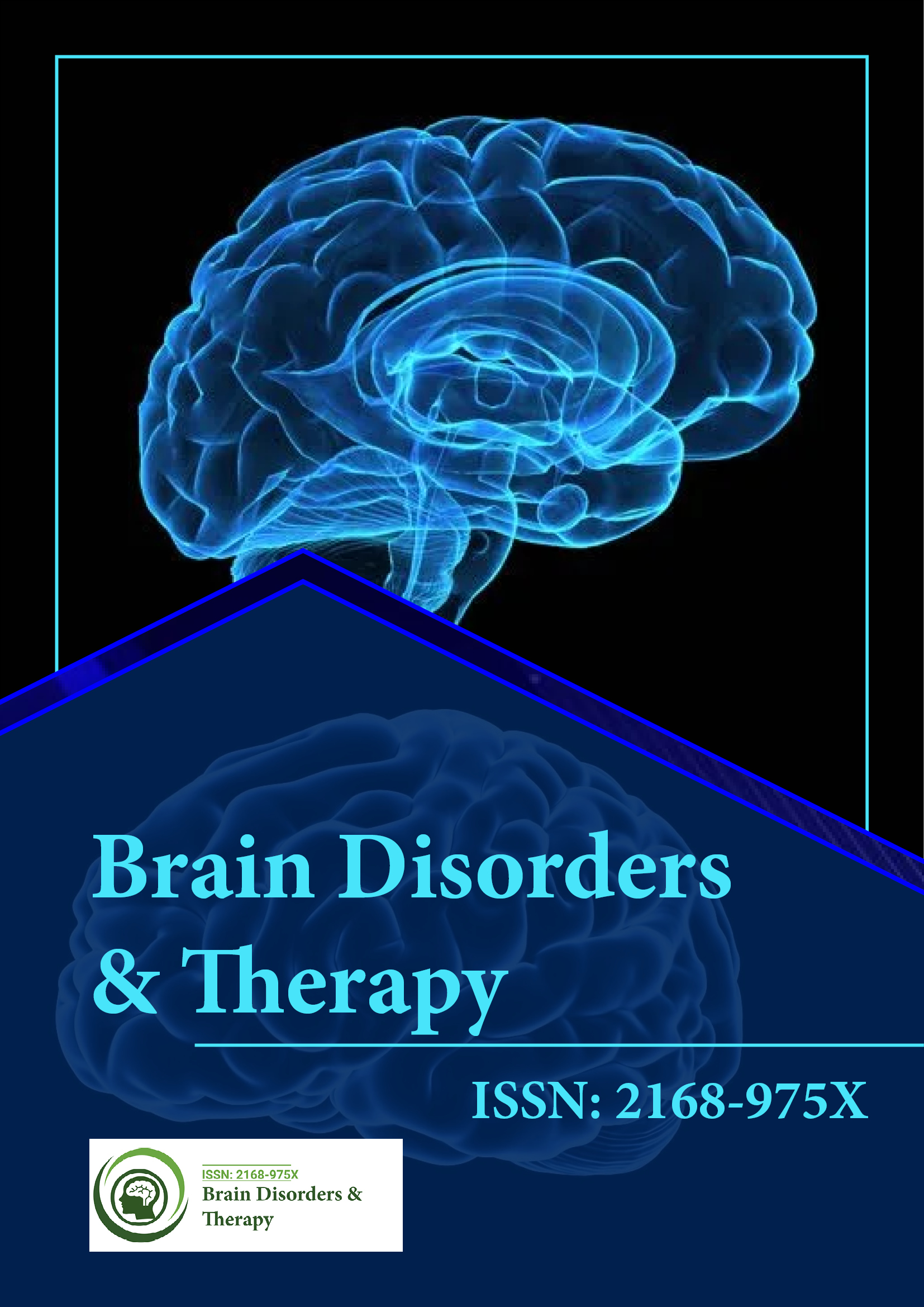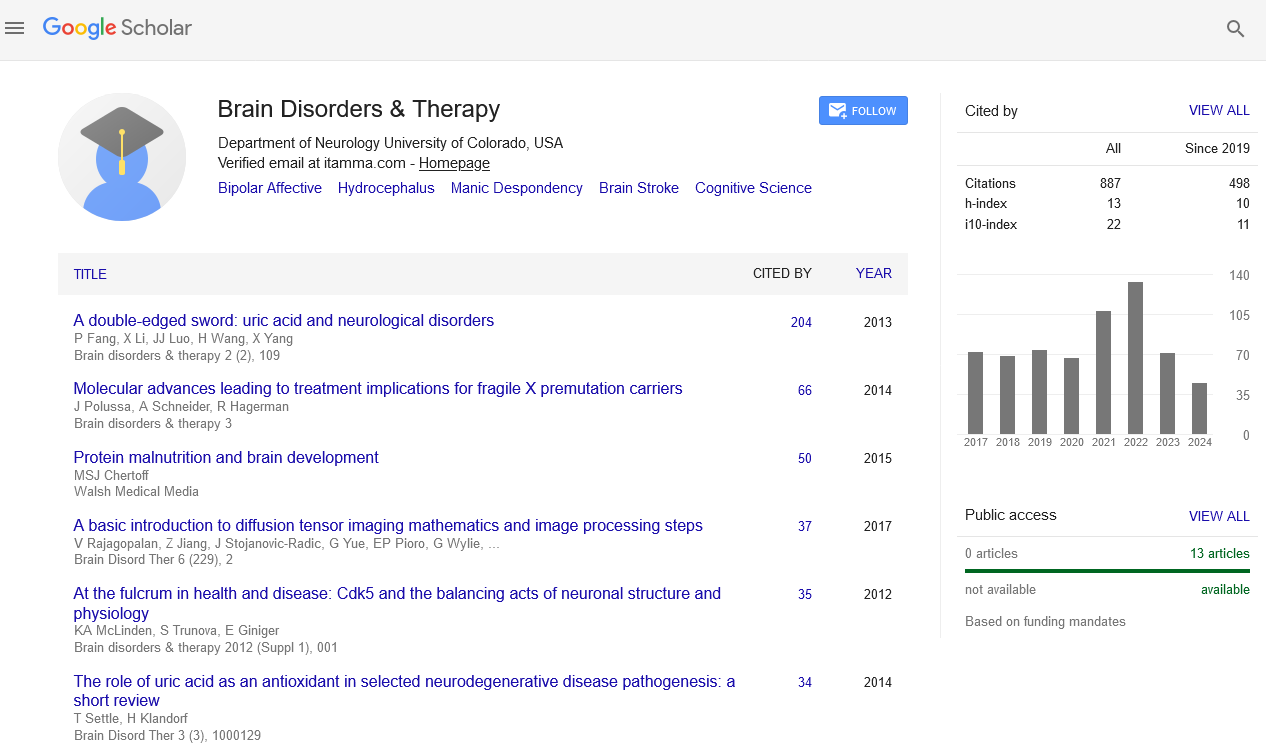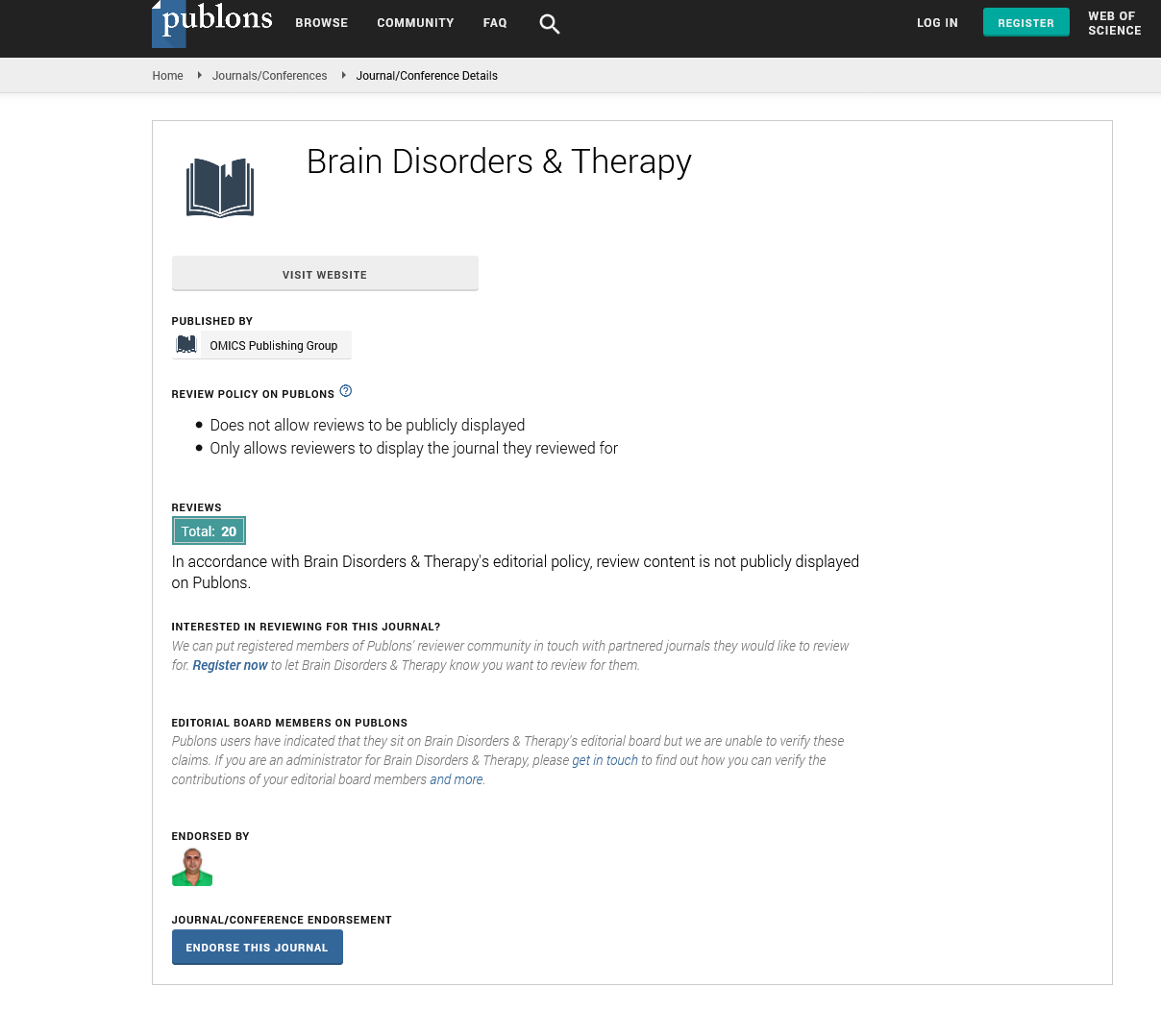Indexed In
- Open J Gate
- Genamics JournalSeek
- JournalTOCs
- RefSeek
- Hamdard University
- EBSCO A-Z
- OCLC- WorldCat
- Publons
- Geneva Foundation for Medical Education and Research
Useful Links
Share This Page
Journal Flyer

Open Access Journals
- Agri and Aquaculture
- Biochemistry
- Bioinformatics & Systems Biology
- Business & Management
- Chemistry
- Clinical Sciences
- Engineering
- Food & Nutrition
- General Science
- Genetics & Molecular Biology
- Immunology & Microbiology
- Medical Sciences
- Neuroscience & Psychology
- Nursing & Health Care
- Pharmaceutical Sciences
Is damage to the cytoskeletal architecture a common pathological hallmark of neurotoxicants
International Conference on Brain Disorders & Therapeutics
August 24-26, 2015 London, UK
Wayne Grant Carter
University of Nottingham, UK
Keynote: Brain Disord Ther
Abstract:
The mechanism by which neurotoxicants, such as alcohol, damage neurons is not fully understood. To investigate the neuropathology arising from cumulative excessive alcohol consumption we examined prefrontal cortex brain tissue from human alcoholics and age, gender, and post-mortem delay matched control subjects. H&E staining and light microscopy of prefrontal cortex tissue revealed a reduction in the levels of cytoskeleton surrounding the nuclei of cortical and subcortical neurons, and a disruption of subcortical neuron patterning in alcoholic subjects. One dimensional polyacrylamide gel electrophoresis proteomics of cytosolic proteins identified dramatic reductions in the protein levels of spectrin �² II, and �±- and �²-tubulins in alcoholics, and these were validated and quantitated by Western blotting. In alcoholics, significant loss of cytosolic �±- and �²-tubulins was also seen in the other brain regions examined: Caudate nucleus, hippocampus, and cerebellum. Collectively, our results suggest that the cytoskeletal architecture is notably susceptible to alcohol-related brain damage. Whether this represents a common pathological hallmark of neurotoxicants will be discussed.
Biography :
Wayne Grant Carter received his Honors degree and PhD in Biochemistry from the University of Southampton, studying protein post-translational modification and molecular signalling cascades. He is currently a Group Leader in the School of Medicine, University of Nottingham, with research focused upon protein post-translational modification and molecular mechanisms of hepato- and neuro-toxicity.


